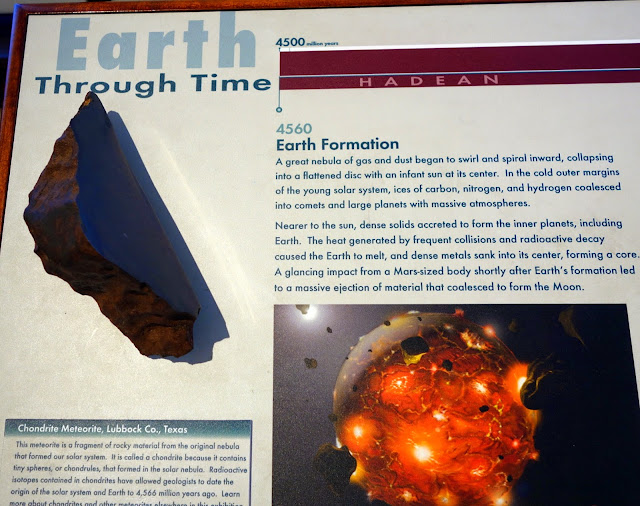I've been to the Harvard Peabody Museum of Natural History 3 times already--once by myself, once with my daughter Timna and her two boys, and once with my 3-year- old grandson Eli.
This museum is on one floor of the building--the third floor.The areas that I enjoyed the most were
Earth and Planetary Sciences
Glass Flowers
and (life in the) the New England Forests

The most amazing part of the museum for me is the huge room of rocks and minerals in the Earth and Planetary Sciences section. After walking through the Museum of Ethnology and Anthropology, I moved through Climate Change quickly into the huge Earth and Planetary Sciences area which was filled with rocks and minerals from many parts of the word in many shapes and colors.
 |
| Less than 1/4 of display space |
Enjoy a few pictures that I took:

 |
| From Arizona...One of my favorites! The sparkle is real!! |
 |
| Beryl from Minas Gerais, Brazil (a place I read about years ago) |
 |
| Calcite from Brazil |
Another color of Calcite from Cambria, England:
 |
| Case of gems |
 |
| Dioptase from Arizona |
 |
| Elbaite from Southern California |
 |
| Just Amazing: Flor de Lisa, Brazil |
 |
| Flourite and Borite from Cambria, England |
 |
| Add caption |
 |
| And Gymsum from Tunisia |
I love the lines of the piece below.
 |
| Kyanite from Brazil |
 |
| Labradorite from Madagascar |
 |
| Quartz, Wyoming |
 |
Quartz, Brazil
 |
| Quartz Namibia |
|
 |
| Beautiful quartz slice |
 |
| Quarts inside stone, opened |
 |
| Smothsonite, various |
 |
| Stibnite, Japan |
 |
| Rosasite, Durango, Mexico |
 |
| Mesolite from India |
 |
| Malakite, Arizona |
When I visited with my grandson Jonah (age 8), he was fascinated by the history of the earth and and stones of the earth. It took up half of one wall area.
My 3 year old and 5 year old grandsons liked to touch and climb on the meteorites.
The glass flower exhibit, one of the museum's most famous treasures, was astonishing. The Wave collection of Blaschka Glass Models of Plans, the "Glass Flowers," includes over 4,000 models, some 3,000 on display, representing more than 830 plant species. . They were created by father and son Leopold and Rudolf Blaschka, nineteenth century glass artisans who perfected their family craft.
The work was started in 1886 and continued for over 5 decades.
 |
| Glass Flowers and glass rotting fruit |
These were amazing. We could not believe they were made of glass!
Eli also enjoyed the New England Forests room, and the dioramas there were very nice.
I was really uncomfortable by the stuffed animals, in glass "boxes" in plain rooms with little labeling. It reminded me of museums from 50 years ago.
Eli also loved the cockroach exhibit and watched the insects roam around in what looked like a glass fish tank.
The rock and glass flower collections are amazing and worth the visit. I also found the gift shop fun and educational.






































No comments:
Post a Comment